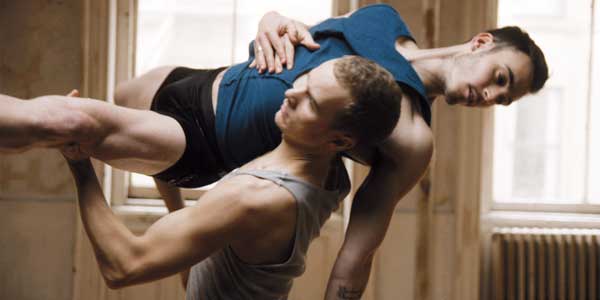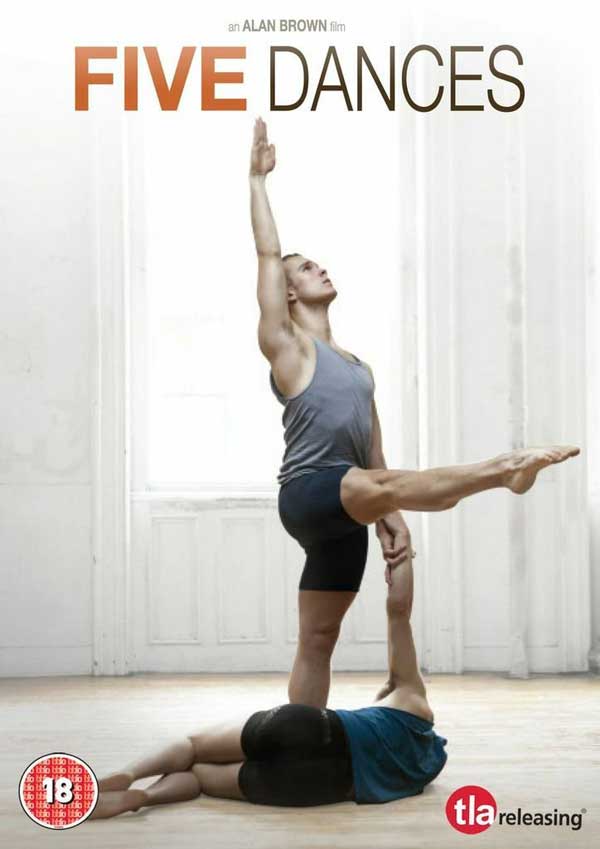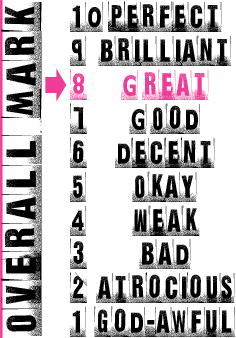
Director: Alan Brown
Running Time: 83 mins
Certificate: 15
Release Date: October 28th 2013

I had a film studies teacher at university who insisted that Michelle Pfeiffer taking off a glove in Martin Scorsese’s The Age Of Innocence was the sexiest moment in cinema. At the time I assumed this must be someone who’d only heard about having sex the previous Tuesday and therefore couldn’t actually tell what was sexy (or who had some sort of major glove fetish). However Five Dances makes a good argument that watching dance on screen can be a lot sexier than most movie sex scenes (even though the film also has a decent one of those).
Five Dances is set in New York, following a group of dancers who have been brought together to create and rehearse a new piece. Key amongst these people is Chip (Ryan Steele), who’s 18-years-old and relatively fresh to New York, having grown up in the Midwest. While others assume his parents must be proud of him for what he’s achieving as a dancer, he’s actually from a broken family, with a needy, emotionally blackmailing mother who’s trying to force him to return home, no matter what that means for him.
As rehearsals continue he learns more about the other dancers and also begins to get attention from Theo (Reed Luplau). However young Chip isn’t sure how he feels about this, and also how he can be sure of Theo’s intentions and that this is a relationship he wants to get involved with.
There’s not a vast amount of traditional story in Five Dances and that’s partly because, as the title suggests, it pivots around a quintet of dances, which comment on and illuminate the rest of the film. These sections of dance are extremely well put together with truly talented artists and some great music. Even when they’re not directly about sex, there’s an intimacy and sensuality to the pieces. The film shows the trust and openness people trying to dance together need, and how this has to move from a kind of forced closeness to true trust, where you believe the other person will do what they have to not just to ensure your performance succeeds but also to keep you safe. And in doing that it uses dance to mimic and explore human relationships.
Alan Brown’s movie owes a lot to Ryan Steele as Chip. He’s a dancer with only a couple of screen credits (and that was as a dancer in the likes of TV’s Smash), but he’s got a sweet, direct acting style, where he’s happy to leave himself open. His dance training obviously helps with this, as his movements and face are extremely expressive, so that no matter what’s happening he always looks a little wounded.
There’s undoubtedly a slightly pretentious streak to the movie, but compared to many films about dance it’s remarkably accessible and keen for a general viewer to be able to use its simple but moving story to connect with the beautiful dance sequences, and perhaps see why so many people love it.
Overall Verdict: If I’m honest, I’m not a big fan of dance, as most of it leaves me completely cold, but Five Dances quickly won me over and surprised me with how moving and involving it was – both when people are moving to music and when they’re not.
Reviewer: Tim Isaac





Leave a Reply (if comment does not appear immediately, it may have been held for moderation)